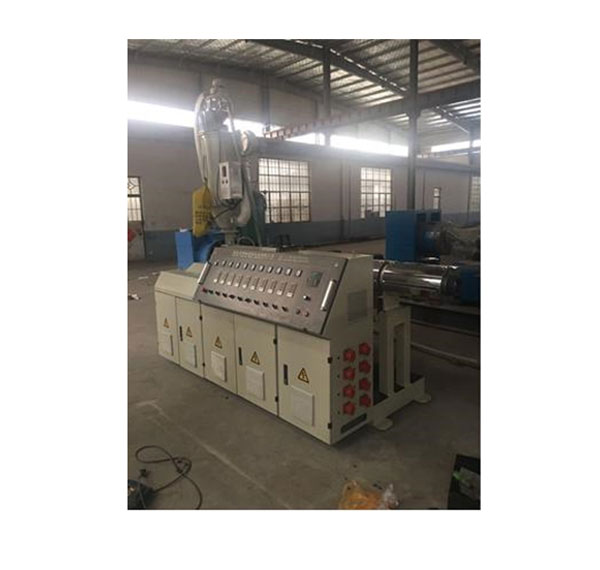Definition and Operation of Single Screw Extruders
(2022年10月31日)https://www.kailitemachinery.com/definition-and-operation-of-single-screw-extruders.html
Definition and Operation of Single Screw Extruders
1. Single Screw Extruder Definition
Screw extruders are divided into single screw extruders and multi-screw extruders. The single screw extruder is the most important type of extruder in the polymer industry. Its main advantages are low cost, simple design, powerful and reliable function, and satisfactory cost performance. The screw of a conventional plasticizing extruder has 3 different geometric cross sections.
This geometry is also called "single stage". "Single-stage" means that although the screw has 3 different geometric cross-sections, there is actually only one compressed cross-section. The first part (closest to the feed port) has a relatively deep groove. Most of the materials in this section are solid. This part is called the feed part of the screw. The groove in the last part (closest to the mold) is usually shallow. Most of the materials in this part are in a molten state. This screw part is called the metering part or the extruding part. The second part connects the feeding part and the metering part. This part is called the transition part or the compression part. In most cases, the depth of the screw groove (or the height of the screw edge) decreases linearly from the feeding part to the metering part, so the material is compressed in the screw groove. In the future, it will prove that this kind of compression is essential for the correct operation of the extruder in the quietest conditions.
2. Basic operation of single screw extruders
The operation of the single screw extruders is very simple. The material enters from the hopper. Usually, the material flows from the hopper into the extruder barrel by gravity. Some materials are not easy to flow in the dry state, and special measures must be taken to prevent the materials from hanging in the hopper. Once the material falls into the extruder, the material is located in the annular space between the single extruder screw and barrel of the extruder, and then is surrounded by the drive of the spiral ribs and the grooves of the wing. When the screw rotates, the machine stands still. Therefore, the friction force acts on the material and surface of the screw. At least the object is in a solid state (below the melting point), and these friction forces are responsible for transporting the material forward.
When the material moves forward, the material will be heated by the heat generated by friction and the heat generated by the barrel heater. When the temperature of the material exceeds its melting point, a molten film is formed on the inner surface of the barrel, and the plasticized part starts. It must be pointed out that the starting point of the plasticizing section is usually not the starting point of the compression section. The dividing line of each functional segment depends on the properties of the polymer, the geometry of the extruder and the operating conditions. Therefore, the dividing line can be changed according to changes in operating conditions. However, the geometric cross-section of the screw is determined by the design and will not change due to changes in operating conditions. When the material moves forward, the amount of solid material at each location decreases due to melting. When all the solid polymer disappears, it reaches the end of the plasticizing section and the melt conveying section begins. In the solid conveying zone, the melt is uniformly conveyed to the mold.
When the polymer flows into the mold, it assumes the shape of the mold runner. Therefore, when the polymer leaves the mold, its shape is more or less consistent with the cross-sectional shape of the last part of the mold runner. Since the mold generates flow resistance, pressure is required to force the material through the mold. This pressure is commonly referred to as mold pressure. The pressure of the mold depends on the shape of the mold (especially the runner), the temperature of the polymer melt, the flow rate through the mold, and the rheology of the polymer melt. The die pressure is generated by the die, not by the extruder. The extruder only generates enough pressure to force the material through the die. If the polymer, extrusion volume, die and die temperature are the same, there will be no difference whether the extruder is a gear pump single-screw extruder or a twin-screw extruder, and the pressure head force is the same. Therefore, mold pressure is caused.
As an extrusion line manufacturer, we will provide more types of related products for sale, anything you need, please contact us.
The Kailite extruder products have complete functions. Our extrusion machinery is easy to operate, easy to expand, can be applied to formula research and development.
- «前のできごと |
- 次のできごと»
- このできごとのURL:



コメント